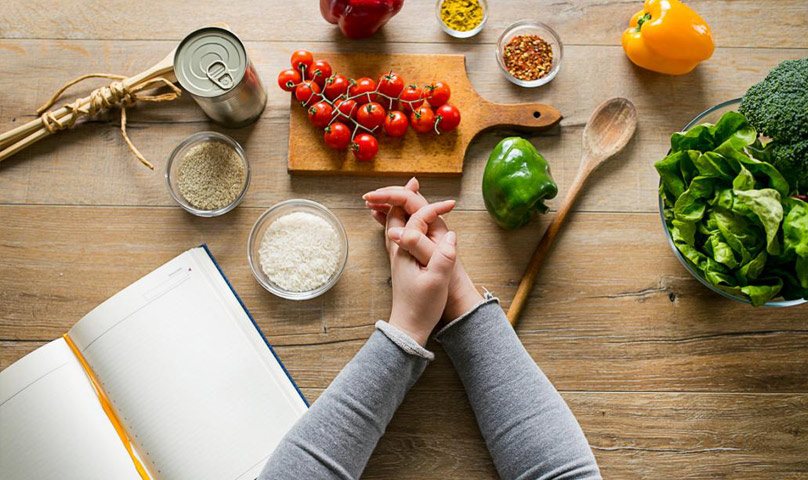In Ayurveda, there is an important concept called Viruddhaahara. This term referrers to the incompatibility of certain food articles when consumed together. The concept of Viruddhaahara has important practical implications because incompatibility causes a lot of disturbances to the physiology of the body and gives rise to the diseases of varied nature.
Over 20 different kinds of Viruddhaahara have been identified in Ayurveda. Some of these are:
Rasaviruddha: Substances having a sweet taste ( like milk) should not be consumed with substances having a sour taste ( fruits like grapes) in a very strict sense, it is hence unhealthy as per the norms of Ayurveda to drink the popular milkshakes of today.
Samskaraviruddha: These are food articles antagonistic in the way they are processed. Samskara means processing a food item to change its qualities, for example, by roasting, frying, steaming etc. some healthy food substances produce harmful qualities when they undergo specific processing methods. Curds or honey on heating become harmful to the body.
Viryaviruddha: This refers to food articles that must not be mixed together owing to their virya. Virya is the potency of food that can produce either hotness or coldness in the body while undergoing digestion. For instance, a food item prepared by using milk/ buttermilk and fish together becomes antagonistic as milk is sheethavirya (producing coldness) while fish is ushnavirya (producing heat).
Samyogaviruddha: This refers to food substances antagonistic due to the process of mixing. For instance, a mixture of fruits with sour taste and milk is contraindicated. Also, a mixture of fish with curd, or of alcohol with milk products is antagonistic to each other.
Pakaviruddha: These are articles antagonistic in the way they are cooked. Uncooked food or partially cooked food is unhealthy.
Agniviruddha: This means incompatibility due to a difference in the food ingested and digestive capacity of an individual (agni). For instance, if a person with mandaagni (diminished digestive power) consumes a lot of food then it keeps piling up, leading to indigestion and disease. This will require him to fast. Similarly, a person with pitta predominance will have tikshnaagni (increased digestive capacity) and has to take food articles which are Guru (heavy), Snigdha (oily) and Manda (foods requiring a long time for digestion).
Satmyaviruddha: A person acquainted with certain food habits should not change his food habits all of a sudden. An abrupt change to a new food regimen is known as satmyaviruddha.
Doshaviruddha: Every person has a normal constitution and due to this, he is prone to certain likes and dislikes from birth. The Vata constitution types can stay healthy by taking foods which are oily and heavy in nature and stable. Foods of these qualities help Vata function normally. But, if a person consumes a diet that is bitter, pungent, astringent and light then it will lead to the manifestation of disorders of Vata.
TIPS ON DIET FOR HEALTH
Every person should select a diet conducive to his nature, habitat and age. Such a course of action will help to maintain health and prevent disease.
- An improper diet results in abnormal doshas (Vata, Pitta, Kapha) which in turn vitiates the body tissues, causes obstruction of the channels of nutrition, weakens the digestive fire, accumulating toxins in the body ultimately causing disease.
- The quantity of food ingested should be moderate and adequate and taken at the proper time.
- It is important to be conscious of cleaning one’s hands, feet and mouth before eating food. The dining table dishes, spoons, bowls, water containers and cooking utensils should be cleaned scrupulously.
- The surroundings and the atmosphere of the dining room should be clean, airy and fragrant. The clothes worn while doing the outdoor duty should be changed and clean attire should be worn whenever eating at home.
- Ideally, the food should be freshly prepared and warm. It should contain the six rasas or tastes (sweet, sour, salty, pungent, bitter and astringent) in adequate proportion.
- Fatty content in proper quantity is essential in the diet while making the food tasty, it bestows strength and promotes secretion of digestive juices. It also prevents excess production of Vata dosha, nourishes the seven dhathus, increases strength, gives lustre to the skin and causes easy expulsion of stool and gas.
- Food should be taken after complete digestion of the previously taken meal. Roughly, the interval between breakfast and lunch should be around 4-5 hours and the gap between lunch and dinner should be around 5 to 6 hours. Dinner should ideally be taken before sunset and it is advisable to retire to bed 2-3 hours after taking dinner.


I’m extremely impressed with your writing talents and
also with the format in your blog. Is that this a paid theme or did you customize
it yourself? Either way stay up the nice high quality writing, it’s uncommon to
see a great weblog like this one these days..